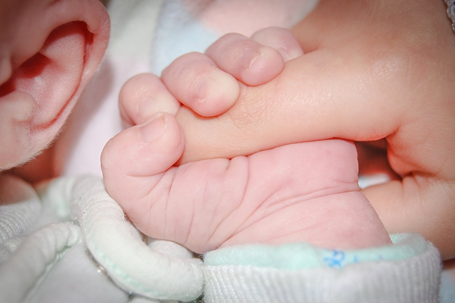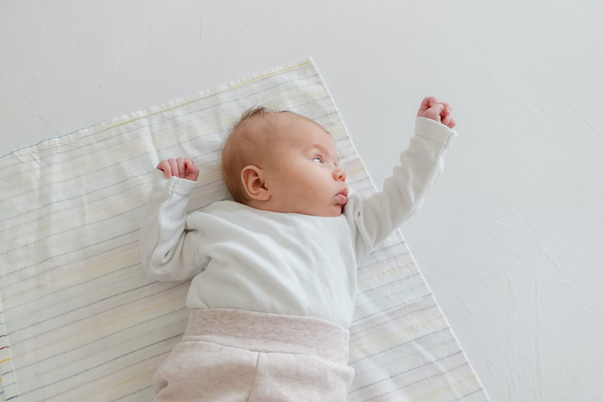6.2: Reflexes
- Page ID
- 139862
Infant Reflexes
Before infants produce self-initiated movements, they exhibit inborn reflexes. Infants are born with a number of reflexes which are involuntary movements in response to stimulation controlled by the brain stem. These include the sucking reflex (infants suck on objects that touch their lips automatically), the rooting reflex (which involves turning toward any object that touches the cheek), the palmar grasp demonstrated in Figure \(\PageIndex{1}\) (the infant will tightly grasp any object placed in its palm), and the dancing reflex (evident when the infant is held in a standing position and moves its feet up and down alternately as if dancing). These movements occur automatically and are signals that the infant is functioning well neurologically. [1]

Over the first few months of life these reflexes are replaced with voluntary movements. For example, the grasping reflex develops by 28 weeks gestation and disappears by six months of age (Schott & Rossor, 2003; Zafeiriou, 2004). The asymmetrical tonic neck reflex is performed by manual rotation of the infant’s head to one side. The infant will extend its arm to the side of the rotated face and flex the contralateral arm (see Figure# for a picture of this reflex). The asymmetrical tonic neck reflex develops by 35 weeks gestation and disappears by three months of age (Zafeiriou, 2004). These inborn reflexes fade within predictable timeframes and can be a sign of concern if they remain longer (Futagi, Toribe & Suzuki, 2012). Children with reflexes that persist for longer than expected, show lower motor abilities, learning difficulties in school and are linked to attention-deficit and hyperactivity disorder (ADHD) symptoms (Bilbilaj, Gjipali & Shkurti, 2017; Konicarova, Bob & Raboch, 2013; Pecuch et al., 2021). [1] [3]

[1] Lifespan Development - Module 4: Infancy by Lumen Learning references Psyc 200 Lifespan Psychology by Laura Overstreet, licensed under CC BY 4.0
[2] Image by jarmoluk on Pixabay.
[3] Modrell & Tadi (2021). Primitive reflexes. In StatPearls. Treasure Island (FL): StatPearls Publishing. CC by 4.0

